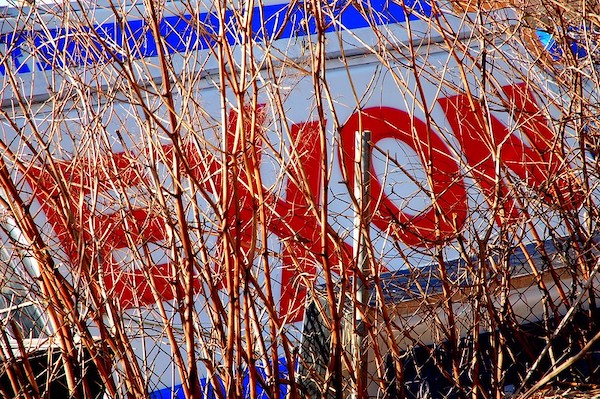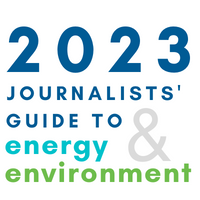SEJournal Online is the digital news magazine of the Society of Environmental Journalists. Learn more about SEJournal Online, including submission, subscription and advertising information.
 |
| Energy giant Exxon Mobil is among the entities reported to have been at the center of efforts to slow the response to global warming through climate denial campaigns going back decades. Photo: Steve Snodgrass via Flickr Creative Commons (CC BY 2.0). |
Issue Backgrounder: Disinformation Presents New Challenges to Environmental Journalists
By Joseph A. Davis
In the old days, who-what-where journalism was often enough. Not on today’s environmental beat. A lot of the sources available in the public sphere are blowing smoke. As well as emitting it.
 |
Disinformation is a big challenge for environmental journalists. It has been for a long time of course; people have been lying to reporters in various ways for many years. On purpose.
But today there seems to be much more information that is untrue, intentionally misleading … and generously paid for. In fact, disinformation has become an important subarea of the environmental beat.
When Rachel Carson was publishing “Silent Spring” in the early 1960s, the chemical industry attacked her with misinformation — but ultimately failed to discredit her assertion that certain pesticides were causing wide harm to species and ecosystems.
In the rush of deadline-driven daily
journalism, it is often tempting to
accept what some expert says.
In the rush of deadline-driven daily journalism, it is often tempting to accept what some expert says — rather than question assumptions, challenge conclusions and ask the all-important question: “How do you know that?”
Journalists specializing in the environment may be a bit faster at calling out malarkey on the beat than general assignment reporters, but they are not immune. It’s even harder when the source giving you malarkey believes it themselves.
Parroting tactics of tobacco, oil industries
Come to think of it, ask them: “Who paid for your research?” It’s usually a bad sign when they dodge the question.
Climate change denial was an important early example. People like Fred Singer, Patrick Michaels and Richard Lindzen were some of the go-to deniers that both-sides journalists could count on for opinions masking as science.
Such classic climate deniers, it turned out, were often parroting tactics used by the experts whom the tobacco industry quoted to argue that smoking did not harm people’s health. Sometimes the oil companies paying for climate denial actually used the same experts as tobacco companies.
It’s even more of a giveaway when they use the same PR firms.
Climate denial, though, was a kind of prototype. The environmental beat has seen many other kinds of disinformation — say, about chemical toxicity, endangered species, mining cleanup or water use.
The history of climate denial
The summer of 1988 was hot and dry. Washington, D.C., was unbearable when Earth scientist James Hansen testified before the Senate Energy Committee that global warming had arrived.
This was hardly the beginning of research and concern over global warming, but it was the beginning of the end of scientific doubt and uncertainty. Over the next two decades, most Earth scientists arrived at the same conclusion as Hansen. It was also the year that the huge international scientific collaboration, the Intergovernmental Panel on Climate Change, or IPCC, was founded.
By the next year, 1989, the Global Climate Coalition, or GCC, was also founded. With backing from the likes of Exxon Mobil and the American Petroleum Institute, this lobbying group sought to discourage action to mitigate global warming, as well as to deny anthropogenic climate change and raise doubt about climate science.
It did not go well. After a few years of aggressive climate denial, the GCC faded and other organizations took its place (e.g., the Heartland Institute). The apparatus of advocacy groups, trade associations, think tanks, lobbyists and lawyers devoted to climate denial went underground.
Even though big oil companies like Exxon claimed not to be funding climate denial, research showed they were. Anti-regulatory billionaires like the Koch brothers began pumping hundreds of millions worth of dark money into climate denial.
Eventually, the best environmental
journalists started working to expose the
dark money behind the climate denial machine.
Eventually, the best environmental journalists started working to expose the dark money behind the climate denial machine — journalists like Suzanne Goldenberg at The Guardian or Jane Mayer at The New Yorker. The team of Neela Banerjee, Lisa Song, David Hasmeyer and others at Inside Climate News were recognized by the Pulitzer Prize Board for their probe of Exxon’s misinformation campaign.
And academic experts, too, began exploring not merely climate denial, but the many ways disinformation worked to prevent environmental health solutions. One landmark was the book “Doubt Is Their Product” by David Michaels and another was “Merchants of Doubt” by Naomi Oreskes. Both connect the disinformation techniques of climate denial to other disinformation campaigns in environmental health.
Disinformation is now a beat
On a day-to-day basis, disinformation continues on the environmental beat and, in fact, has become a bit of a reporting subspecialty. The idea is that one of the best ways to counter disinformation is to shine a very bright spotlight on it.
Nowadays, there is much attention to the PR and advertising firms that are quietly conducting campaigns for fossil fuel and other nonclean industries. A big splash came from a 2021 study published in the journal Climatic Change by Robert Brulle and Carter Werthman, which cataloged hundreds of PR campaigns run for the fossil fuels industry — often by front groups.
During the current Congress, a House Oversight subcommittee summoned major oil execs to explain what looked like climate disinformation. Before the recent COP27 meeting, a top U.N. official complained that climate disinformation was impeding climate action.
So if you write about climate change at all, it is worth keeping up with the latest disinformation. Years ago, Canadian PR maven Jim Hoggan started DeSmog to expose and cut through the disinformation haze on climate. It is still going.
Of course, The Guardian is still a key source on climate disinformation. You can find work by Amy Westervelt there (or on her own award-winning podcast “Drilled”). Also check out Emily Atkin’s Substack newsletter HEATED, which punctures a lot of disinformation balloons, and Paul Thacker’s The Disinformation Chronicle, also on Substack.
How do you handle disinformation?
There is already a burgeoning literature in J-schools about how to deal with disinformation. First, get the facts right. Misinformation is just dumb or wrong; disinformation is wrong on purpose to fool people and achieve some ulterior motive.
Here are some strategies for dealing with it.
- Be skeptical, really skeptical. That’s what most journalists should be doing from the get-go. Among your first questions should be: ”Where did that information come from?” and “How do you know that?” Talk to the original source. Fact-check everything. Then give it to the fact-checker.
- Avoid false balance. It is better to find out and tell the truth than to give truth and falsehood equal weight. When you don’t know something, say so.
- Consider the source. Just because something is on Twitter or Facebook doesn’t make it true. Does the source have an economic or political stake in what they are telling you? It is often best to spell that out. Attribute information to sources.
- Avoid the temptation to be first at any cost. Being right is better. A “permanent exclusive” (may require subscription) is nothing to be proud of.
- Consider “pre-bunking” or “pre-butting.” First, say it is untrue, then quote the untruth, then say how it is untrue. They call it a truth sandwich.
- Talk to the scientists. Find their names in journals or on the teams producing chapters for the IPCC. Look at their affiliations and published articles. The Union of Concerned Scientists has long been an honest source. There are actually organizations shedding light on climate disinformation and journalists writing about them.
- Don’t believe experts who say jargon or lingo is necessary. Instead, pay close attention to when fancy words mask or distract from the important truth. Translate. Every day on the job, environmental journalists encounter words meant to confuse or deceive. Remember “clean coal”? Now tell me what “net zero” means.
For more, The Journalist’s Resource has this helpful tipsheet. The RTDNA has guidelines, as does the Nieman Lab. Here is some advice from the Stanford Cyber Policy Center. Here’s some more from PEN America. And check out this recent SEJournal WatchDog Opinion column on disinformation and climate censorship.
[Correction: An earlier version of this story incorrectly characterized the amount of dark money spent on climate denial. It should have read hundreds of millions of dollars.]
Joseph A. Davis is a freelance writer/editor in Washington, D.C. who has been writing about the environment since 1976. He writes SEJournal Online's TipSheet, Reporter's Toolbox and Issue Backgrounder, and curates SEJ's weekday news headlines service EJToday and @EJTodayNews. Davis also directs SEJ's Freedom of Information Project and writes the WatchDog opinion column.
* From the weekly news magazine SEJournal Online, Vol. 7, No. 45. Content from each new issue of SEJournal Online is available to the public via the SEJournal Online main page. Subscribe to the e-newsletter here. And see past issues of the SEJournal archived here.













 Advertisement
Advertisement 



